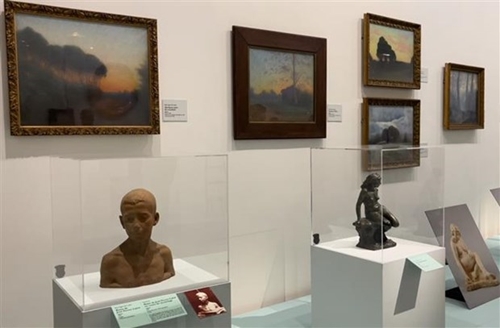The exhibits were collected in nearly 10 years by Amandine Dabat, a 5th generation descendant of the king, who did a doctoral thesis on King Ham Nghi’s art career and is also the author of the book “Ham Nghi - Empereur en exil, artiste à Alger” (Ham Nghi - Emperor in exile, artist in Algeria) published in 2019 in France.
    |
 |
|
Exiled Vietnamese emperor’s art works exhibited in France |
This is the first exhibition about King Ham Nghi since his death. The last exhibition held by the emperor was in 1926.
The current exhibition aims to introduce to the public, both French and Vietnamese, a rather comprehensive look at the life of the exiled patriotic king with the soul of an artist and a sculptor, whose teachers were famous French artists.
Adrien Bossard, the curator of the Nice Museum for Asian Arts, said the exhibition is a unique event because King Ham Nghi is an Asian, but he followed the European impressionist art and developed his career in Africa.
He said the exhibition not only gives the public a new and interesting view of Asia, but also spotlights the historical significance because the exhibits talk about a figure of royal lineage in Vietnam which was related to the Indochina war and the French colonial period in the Southeast Asian country.
The exhibition has so far attracted 8,000 visitors, and it is hoped to welcome 25,000 people by the end of June.
King Ham Nghi, whose real name was Nguyen Phuc Ung Lich, was the 8th emperor of the Nguyen Dynasty but only reigned for one year (1884 - 1885).
Though the emperor was popular as an anti-French emperor who was exiled to Algeria, he was also a little-known painter that held exhibitions in Paris.
His artworks are diverse, from oil paintings and pastels to bronze, plaster and wood sculptures. Using his innate ability, he quickly learned and absorbed the skills that were taught by famous sculptor Auguste Rodin (1840-1917).
Source: VNA